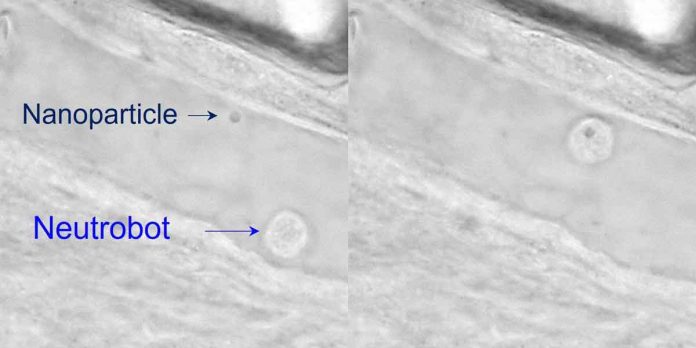Medicinal microrobots could aid physicians in disease treatment and prevention. However, the majority of these devices are made of synthetic materials that cause immune responses in vivo. For the first time, researchers reporting in ACS Central Science used lasers to precisely control neutrophils, a type of white blood cell, in living fish as a natural, biocompatible microrobot. The “neutrobots” performed a variety of tasks, demonstrating that they could one day deliver drugs to specific locations in the body.
Microrobots in development for medical applications would require injections or capsule consumption to get inside an animal or person. However, researchers have discovered that these microscopic objects frequently cause immune responses in small animals, resulting in the removal of microrobots from the body before they can perform their functions. Using cells that are already present in the body, such as neutrophils, may be a less invasive option for drug delivery that does not activate the immune system. These white blood cells pick up nanoparticles and dead red blood cells naturally and can migrate through blood vessels into adjacent tissues, making them ideal candidates for becoming microrobots.
Previously, researchers guided neutrophils in lab dishes with lasers, moving them around as “neutrobots.” However, there was no information on whether this approach would work in living animals. So, Xianchuang Zheng, Baojun Li, and colleagues wanted to use live zebrafish to demonstrate the feasibility of light-driven neutrobots in animals.
The researchers used focused laser beams as remote optical tweezers to manipulate neutrophils in zebrafish tails. The light-driven microrobot could move at 1.3 m/s, which is three times faster than a neutrophil moves naturally. The optical tweezers were used by the researchers in their experiments to precisely and actively control the functions that neutrophils perform as part of the immune system.
A neutrobot, for example, was moved through a blood vessel wall into the surrounding tissue. Another one picked up and carried a plastic nanoparticle, demonstrating its utility in carrying medicine. When a neutrobot was pushed into red blood cell debris, it engulfed it. Surprisingly, a different neutrophil, not controlled by a laser, attempted to naturally remove the cellular debris at the same time.
The researchers say this study advances the possibilities for targeted drug delivery and precise disease treatment because they successfully controlled neutrobots in vivo.

